-
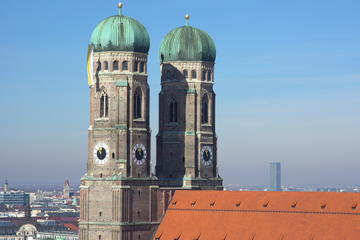 Cathedral of Our Blessed Lady (Frauenkirche)
Cathedral of Our Blessed Lady (Frauenkirche) Which landmark particularly stands out in Munichs skyline? That would be the Cathedral of Our Blessed Lady or Frauenkirche, the church featuring two onion-shaped domes on top of twin towers that reach 99 meters (325 feet). But its not just the churchs a
Cathedral of Our Blessed Lady (Frauenkirche)
Cathedral of Our Blessed Lady (Frauenkirche) Which landmark particularly stands out in Munichs skyline? That would be the Cathedral of Our Blessed Lady or Frauenkirche, the church featuring two onion-shaped domes on top of twin towers that reach 99 meters (325 feet). But its not just the churchs a
-
 St. Peters Church (Peterskirche)
St. Peters Church (Peterskirche) The oldest church in Munich, St. Peters Church, or Peterskirche, is a Roman Catholic establishment built in the 12th century in the Bavarian Romanesque style. The interior of the church features the magnificent Mariahilf-Altar, Gothic paintings & sculptures, and a
St. Peters Church (Peterskirche)
St. Peters Church (Peterskirche) The oldest church in Munich, St. Peters Church, or Peterskirche, is a Roman Catholic establishment built in the 12th century in the Bavarian Romanesque style. The interior of the church features the magnificent Mariahilf-Altar, Gothic paintings & sculptures, and a
-
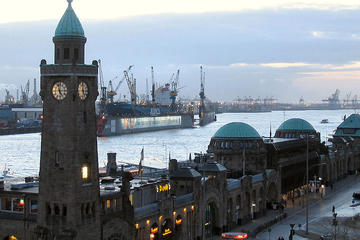 Port of Hamburg
Port of Hamburg Trade has always been Hamburg’s raison d’etre, and today the Port of Hamburg is the largest in Germany. The sprawling port takes up more than an eighth of the city, with around 12,000 ships a year delivering and picking up goods. A river cruise is a good way to get an idea of the p
Port of Hamburg
Port of Hamburg Trade has always been Hamburg’s raison d’etre, and today the Port of Hamburg is the largest in Germany. The sprawling port takes up more than an eighth of the city, with around 12,000 ships a year delivering and picking up goods. A river cruise is a good way to get an idea of the p
-
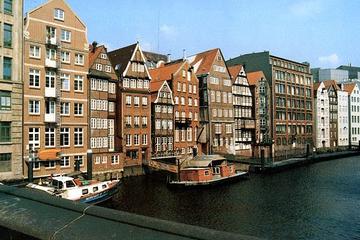 Hamburg Altstadt
Hamburg Altstadt The focus of Hamburg’s Altstadt, or Old Town, is the Rathaus on the old market square. Streets leading off the square head to the classical arcades of the stock exchange, and to the old red-brick Speicherstadt warehouses lining the river. Away from the Elbe, the Alsterarkaden has
Hamburg Altstadt
Hamburg Altstadt The focus of Hamburg’s Altstadt, or Old Town, is the Rathaus on the old market square. Streets leading off the square head to the classical arcades of the stock exchange, and to the old red-brick Speicherstadt warehouses lining the river. Away from the Elbe, the Alsterarkaden has
-
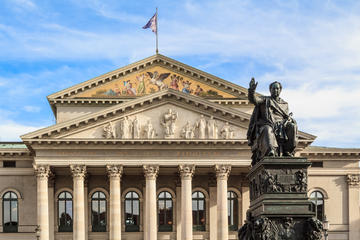 Bayerische Staatsoper (Bavarian State Opera)
Bayerische Staatsoper (Bavarian State Opera) The Bavarian State Opera is one of the world’s leading opera houses, with over 400 performances and 600,000 visitors yearly. Its history spans over three centuries and helped shape Munich as we know it today, a culture-savvy metropolis with unparalleled
Bayerische Staatsoper (Bavarian State Opera)
Bayerische Staatsoper (Bavarian State Opera) The Bavarian State Opera is one of the world’s leading opera houses, with over 400 performances and 600,000 visitors yearly. Its history spans over three centuries and helped shape Munich as we know it today, a culture-savvy metropolis with unparalleled
-
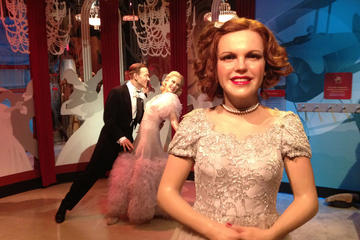 Madame Tussauds Berlin
Madame Tussauds Berlin Madame Tussauds is the ultimate wax museum with locations the world over. Madame Tussauds Berlin has a wide variety of life-like wax figures made to look like celebrities, including actors such as Johnny Depp and Julia Roberts, and musicians such as Rihanna and the Beatles.
Madame Tussauds Berlin
Madame Tussauds Berlin Madame Tussauds is the ultimate wax museum with locations the world over. Madame Tussauds Berlin has a wide variety of life-like wax figures made to look like celebrities, including actors such as Johnny Depp and Julia Roberts, and musicians such as Rihanna and the Beatles.
-
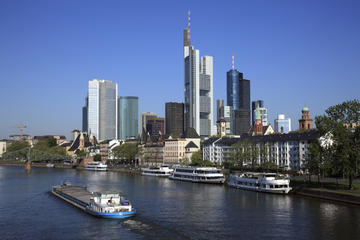 Main River
Main River Flowing 527km between Mainz and Bamberg, and passing through 3 German states (Bavaria, Baden-Württemberg and Hesse), the Main River is one of the main tributaries of the mighty Rhine River. Running through the heart of Frankfurt, the river is not only the lifeline of the city’s industri
Main River
Main River Flowing 527km between Mainz and Bamberg, and passing through 3 German states (Bavaria, Baden-Württemberg and Hesse), the Main River is one of the main tributaries of the mighty Rhine River. Running through the heart of Frankfurt, the river is not only the lifeline of the city’s industri
-
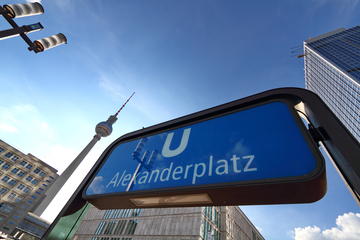 Berlin Underground
Berlin Underground For a fascinating look into Germanys history during WWII, Berlin has an elaborate set of multi-purpose underground bunkers built to host what is essentially an underground society. Complete with bathrooms, bedrooms, even a Wehenzimmer, a labor room for pregnant women, a tour thr
Berlin Underground
Berlin Underground For a fascinating look into Germanys history during WWII, Berlin has an elaborate set of multi-purpose underground bunkers built to host what is essentially an underground society. Complete with bathrooms, bedrooms, even a Wehenzimmer, a labor room for pregnant women, a tour thr
-
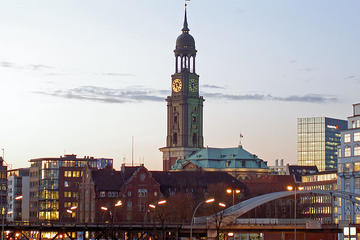 Church St Michaelis (Michaeliskirche)
Church St Michaelis (Michaeliskirche) The baroque Protestant Church of St. Michaelis (Michaeliskirche) is a Hamburg landmark. Its famous clock tower soaring above the city roofs has been a beacon for sailors since the 1680s.The copper dome and gold clock of St. Michaelis’ 132-meter (433-foot) towe
Church St Michaelis (Michaeliskirche)
Church St Michaelis (Michaeliskirche) The baroque Protestant Church of St. Michaelis (Michaeliskirche) is a Hamburg landmark. Its famous clock tower soaring above the city roofs has been a beacon for sailors since the 1680s.The copper dome and gold clock of St. Michaelis’ 132-meter (433-foot) towe
-
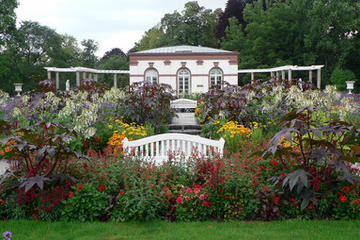 Palm Garden (Palmengarten)
Palm Garden (Palmengarten) The Palm Garden (or Palmengarten) is the largest garden of its kind in Germany. The botanical exhibitions are organized according to their geographic origin in open air or climate-controlled greenhouses. The Palm Garden is famous worldwide for its ample collection of nat
Palm Garden (Palmengarten)
Palm Garden (Palmengarten) The Palm Garden (or Palmengarten) is the largest garden of its kind in Germany. The botanical exhibitions are organized according to their geographic origin in open air or climate-controlled greenhouses. The Palm Garden is famous worldwide for its ample collection of nat
-
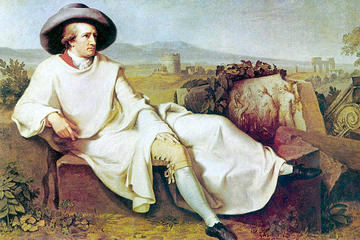 Stadel Museum (Stadelsches Kunstinstitut und Stadtische Galerie)
Stadel Museum (Stadelsches Kunstinstitut und Stadtische Galerie) The Main River’s south bank is lined with museums, the most impressive being the Städel Museum. The Städel was founded in 1815 by the Frankfurt banker and merchant Johann Friedrich Städel and has grown to contain one of Europe’s fine
Stadel Museum (Stadelsches Kunstinstitut und Stadtische Galerie)
Stadel Museum (Stadelsches Kunstinstitut und Stadtische Galerie) The Main River’s south bank is lined with museums, the most impressive being the Städel Museum. The Städel was founded in 1815 by the Frankfurt banker and merchant Johann Friedrich Städel and has grown to contain one of Europe’s fine
-
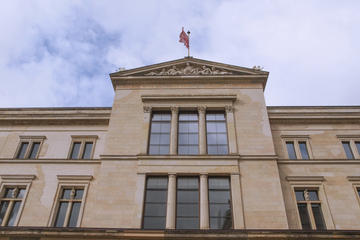 Neues Museum (New Museum)
Neues Museum (New Museum) The Neues Museum was built in the mid-1800s and was heavily damaged during World War II. Restoration work beginning in 2005 carefully preserved the facade and interior, while incorporating damage from war into the design, rather than covering it up. The museum opened its
Neues Museum (New Museum)
Neues Museum (New Museum) The Neues Museum was built in the mid-1800s and was heavily damaged during World War II. Restoration work beginning in 2005 carefully preserved the facade and interior, while incorporating damage from war into the design, rather than covering it up. The museum opened its
-
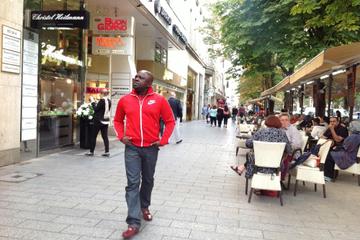 Konigsallee (Kings Alley)
Konigsallee (Kings Alley) With its rows of designer boutiques and luxury department stores bordering a serene tree-lined canal, Konigsallee (Kings Alley) is surely one of Germany’s prettiest boulevards, as well as being Dusseldorf’s busiest shopping street. First laid out back in 1802, Konigsallee
Konigsallee (Kings Alley)
Konigsallee (Kings Alley) With its rows of designer boutiques and luxury department stores bordering a serene tree-lined canal, Konigsallee (Kings Alley) is surely one of Germany’s prettiest boulevards, as well as being Dusseldorf’s busiest shopping street. First laid out back in 1802, Konigsallee
-
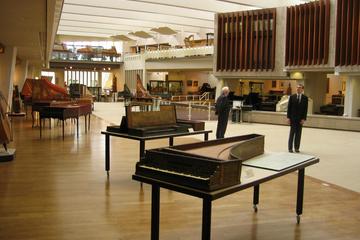 Berlin Musical Instrument Museum
Berlin Musical Instrument Museum The Berlin Musical Instrument Museum is a research institution for musicology with more than 3,000 instruments from the 16th century to present day, at least 800 of which are regularly on display. Exhibits include musical instruments of historical significance, suc
Berlin Musical Instrument Museum
Berlin Musical Instrument Museum The Berlin Musical Instrument Museum is a research institution for musicology with more than 3,000 instruments from the 16th century to present day, at least 800 of which are regularly on display. Exhibits include musical instruments of historical significance, suc
-
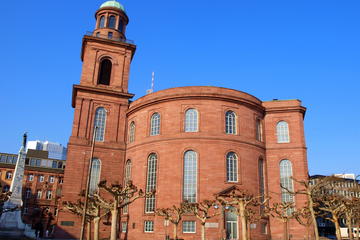 St. Pauls Church (Paulskirche)
St. Pauls Church (Paulskirche) After WWII destroyed much of Frankfurt’s historic center, it was the late 18th-century St. Pauls Church (Paulskirche) that was rebuilt first – a fitting tribute to the symbolic significance of the holy building. The landmark church is renowned as more than just a cen
St. Pauls Church (Paulskirche)
St. Pauls Church (Paulskirche) After WWII destroyed much of Frankfurt’s historic center, it was the late 18th-century St. Pauls Church (Paulskirche) that was rebuilt first – a fitting tribute to the symbolic significance of the holy building. The landmark church is renowned as more than just a cen
-
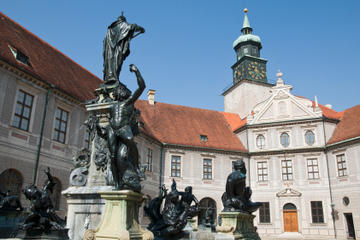 Munich Residence (Residenz München)
Munich Residence (Residenz München) The former royal palace of the Bavarian monarch, the Munich Residenz is the largest city palace in Germany and is open to visitors to see its spectacularly adorned rooms and royal collections. The complex of buildings in the Munich Residenz contains 10 courtyard
Munich Residence (Residenz München)
Munich Residence (Residenz München) The former royal palace of the Bavarian monarch, the Munich Residenz is the largest city palace in Germany and is open to visitors to see its spectacularly adorned rooms and royal collections. The complex of buildings in the Munich Residenz contains 10 courtyard
-
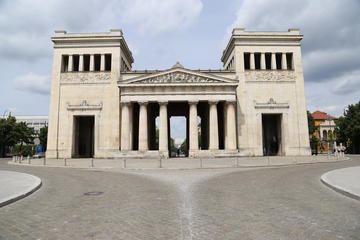 Königsplatz (Kings Square)
Königsplatz (Kings Square) Königsplatz was initially built to serve the urban notions of King Ludwig I, who wished to integrate culture, administration, Christianity and Bavarian military in one massive green space. The king opted for a European Neoclassic style based on the Acropolis in Athens
Königsplatz (Kings Square)
Königsplatz (Kings Square) Königsplatz was initially built to serve the urban notions of King Ludwig I, who wished to integrate culture, administration, Christianity and Bavarian military in one massive green space. The king opted for a European Neoclassic style based on the Acropolis in Athens
-
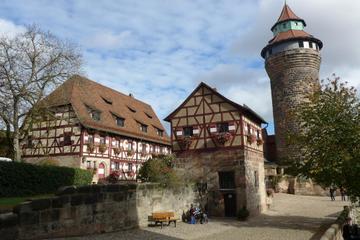 Nazi Documentation Center
Nazi Documentation Center The Nazi Documentation Center is located in the immense Congress Hall, a lakeside walk away from the Nazi Party Rally Grounds in the southern suburbs of Nuremberg.As the largest Nazi structure still standing, the Congress Hall itself is of note; it was intended as the mee
Nazi Documentation Center
Nazi Documentation Center The Nazi Documentation Center is located in the immense Congress Hall, a lakeside walk away from the Nazi Party Rally Grounds in the southern suburbs of Nuremberg.As the largest Nazi structure still standing, the Congress Hall itself is of note; it was intended as the mee
-
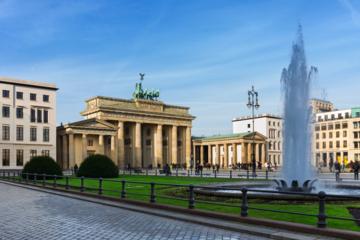 Pariser Platz
Pariser Platz Pariser Platz is a square in Berlin to the east of the Brandenburg Gate. It was named after the city of Paris in 1814 to commemorate the overthrowing of Napoleon in Paris. During the Cold War, this square was just east of the border, and once the Berlin Wall went up, it became part o
Pariser Platz
Pariser Platz Pariser Platz is a square in Berlin to the east of the Brandenburg Gate. It was named after the city of Paris in 1814 to commemorate the overthrowing of Napoleon in Paris. During the Cold War, this square was just east of the border, and once the Berlin Wall went up, it became part o
-
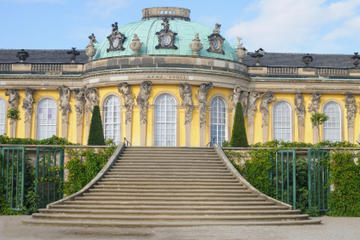 Sanssouci Palace
Sanssouci Palace Step back to the 17th century with a visit to the lavish rococo palace of Frederick the Great, Sanssouci. A reminder of the days when Potsdam was the royal seat of the Brandenburg-Prussian rulers, this famous palace is known for its voluptuous interiors and manicured gardens.Built
Sanssouci Palace
Sanssouci Palace Step back to the 17th century with a visit to the lavish rococo palace of Frederick the Great, Sanssouci. A reminder of the days when Potsdam was the royal seat of the Brandenburg-Prussian rulers, this famous palace is known for its voluptuous interiors and manicured gardens.Built
Total
2004 -travel
FirstPage PreviousPage NextPage LastPage CurrentPage:
9/101 20-travel/Page GoTo Page:
 Cathedral of Our Blessed Lady (Frauenkirche)
Cathedral of Our Blessed Lady (Frauenkirche) Which landmark particularly stands out in Munichs skyline? That would be the Cathedral of Our Blessed Lady or Frauenkirche, the church featuring two onion-shaped domes on top of twin towers that reach 99 meters (325 feet). But its not just the churchs a
Cathedral of Our Blessed Lady (Frauenkirche)
Cathedral of Our Blessed Lady (Frauenkirche) Which landmark particularly stands out in Munichs skyline? That would be the Cathedral of Our Blessed Lady or Frauenkirche, the church featuring two onion-shaped domes on top of twin towers that reach 99 meters (325 feet). But its not just the churchs a
 St. Peters Church (Peterskirche)
St. Peters Church (Peterskirche) The oldest church in Munich, St. Peters Church, or Peterskirche, is a Roman Catholic establishment built in the 12th century in the Bavarian Romanesque style. The interior of the church features the magnificent Mariahilf-Altar, Gothic paintings & sculptures, and a
St. Peters Church (Peterskirche)
St. Peters Church (Peterskirche) The oldest church in Munich, St. Peters Church, or Peterskirche, is a Roman Catholic establishment built in the 12th century in the Bavarian Romanesque style. The interior of the church features the magnificent Mariahilf-Altar, Gothic paintings & sculptures, and a
 Port of Hamburg
Port of Hamburg Trade has always been Hamburg’s raison d’etre, and today the Port of Hamburg is the largest in Germany. The sprawling port takes up more than an eighth of the city, with around 12,000 ships a year delivering and picking up goods. A river cruise is a good way to get an idea of the p
Port of Hamburg
Port of Hamburg Trade has always been Hamburg’s raison d’etre, and today the Port of Hamburg is the largest in Germany. The sprawling port takes up more than an eighth of the city, with around 12,000 ships a year delivering and picking up goods. A river cruise is a good way to get an idea of the p
 Hamburg Altstadt
Hamburg Altstadt The focus of Hamburg’s Altstadt, or Old Town, is the Rathaus on the old market square. Streets leading off the square head to the classical arcades of the stock exchange, and to the old red-brick Speicherstadt warehouses lining the river. Away from the Elbe, the Alsterarkaden has
Hamburg Altstadt
Hamburg Altstadt The focus of Hamburg’s Altstadt, or Old Town, is the Rathaus on the old market square. Streets leading off the square head to the classical arcades of the stock exchange, and to the old red-brick Speicherstadt warehouses lining the river. Away from the Elbe, the Alsterarkaden has
 Bayerische Staatsoper (Bavarian State Opera)
Bayerische Staatsoper (Bavarian State Opera) The Bavarian State Opera is one of the world’s leading opera houses, with over 400 performances and 600,000 visitors yearly. Its history spans over three centuries and helped shape Munich as we know it today, a culture-savvy metropolis with unparalleled
Bayerische Staatsoper (Bavarian State Opera)
Bayerische Staatsoper (Bavarian State Opera) The Bavarian State Opera is one of the world’s leading opera houses, with over 400 performances and 600,000 visitors yearly. Its history spans over three centuries and helped shape Munich as we know it today, a culture-savvy metropolis with unparalleled
 Madame Tussauds Berlin
Madame Tussauds Berlin Madame Tussauds is the ultimate wax museum with locations the world over. Madame Tussauds Berlin has a wide variety of life-like wax figures made to look like celebrities, including actors such as Johnny Depp and Julia Roberts, and musicians such as Rihanna and the Beatles.
Madame Tussauds Berlin
Madame Tussauds Berlin Madame Tussauds is the ultimate wax museum with locations the world over. Madame Tussauds Berlin has a wide variety of life-like wax figures made to look like celebrities, including actors such as Johnny Depp and Julia Roberts, and musicians such as Rihanna and the Beatles.
 Main River
Main River Flowing 527km between Mainz and Bamberg, and passing through 3 German states (Bavaria, Baden-Württemberg and Hesse), the Main River is one of the main tributaries of the mighty Rhine River. Running through the heart of Frankfurt, the river is not only the lifeline of the city’s industri
Main River
Main River Flowing 527km between Mainz and Bamberg, and passing through 3 German states (Bavaria, Baden-Württemberg and Hesse), the Main River is one of the main tributaries of the mighty Rhine River. Running through the heart of Frankfurt, the river is not only the lifeline of the city’s industri
 Berlin Underground
Berlin Underground For a fascinating look into Germanys history during WWII, Berlin has an elaborate set of multi-purpose underground bunkers built to host what is essentially an underground society. Complete with bathrooms, bedrooms, even a Wehenzimmer, a labor room for pregnant women, a tour thr
Berlin Underground
Berlin Underground For a fascinating look into Germanys history during WWII, Berlin has an elaborate set of multi-purpose underground bunkers built to host what is essentially an underground society. Complete with bathrooms, bedrooms, even a Wehenzimmer, a labor room for pregnant women, a tour thr
 Church St Michaelis (Michaeliskirche)
Church St Michaelis (Michaeliskirche) The baroque Protestant Church of St. Michaelis (Michaeliskirche) is a Hamburg landmark. Its famous clock tower soaring above the city roofs has been a beacon for sailors since the 1680s.The copper dome and gold clock of St. Michaelis’ 132-meter (433-foot) towe
Church St Michaelis (Michaeliskirche)
Church St Michaelis (Michaeliskirche) The baroque Protestant Church of St. Michaelis (Michaeliskirche) is a Hamburg landmark. Its famous clock tower soaring above the city roofs has been a beacon for sailors since the 1680s.The copper dome and gold clock of St. Michaelis’ 132-meter (433-foot) towe
 Palm Garden (Palmengarten)
Palm Garden (Palmengarten) The Palm Garden (or Palmengarten) is the largest garden of its kind in Germany. The botanical exhibitions are organized according to their geographic origin in open air or climate-controlled greenhouses. The Palm Garden is famous worldwide for its ample collection of nat
Palm Garden (Palmengarten)
Palm Garden (Palmengarten) The Palm Garden (or Palmengarten) is the largest garden of its kind in Germany. The botanical exhibitions are organized according to their geographic origin in open air or climate-controlled greenhouses. The Palm Garden is famous worldwide for its ample collection of nat
 Stadel Museum (Stadelsches Kunstinstitut und Stadtische Galerie)
Stadel Museum (Stadelsches Kunstinstitut und Stadtische Galerie) The Main River’s south bank is lined with museums, the most impressive being the Städel Museum. The Städel was founded in 1815 by the Frankfurt banker and merchant Johann Friedrich Städel and has grown to contain one of Europe’s fine
Stadel Museum (Stadelsches Kunstinstitut und Stadtische Galerie)
Stadel Museum (Stadelsches Kunstinstitut und Stadtische Galerie) The Main River’s south bank is lined with museums, the most impressive being the Städel Museum. The Städel was founded in 1815 by the Frankfurt banker and merchant Johann Friedrich Städel and has grown to contain one of Europe’s fine
 Neues Museum (New Museum)
Neues Museum (New Museum) The Neues Museum was built in the mid-1800s and was heavily damaged during World War II. Restoration work beginning in 2005 carefully preserved the facade and interior, while incorporating damage from war into the design, rather than covering it up. The museum opened its
Neues Museum (New Museum)
Neues Museum (New Museum) The Neues Museum was built in the mid-1800s and was heavily damaged during World War II. Restoration work beginning in 2005 carefully preserved the facade and interior, while incorporating damage from war into the design, rather than covering it up. The museum opened its
 Konigsallee (Kings Alley)
Konigsallee (Kings Alley) With its rows of designer boutiques and luxury department stores bordering a serene tree-lined canal, Konigsallee (Kings Alley) is surely one of Germany’s prettiest boulevards, as well as being Dusseldorf’s busiest shopping street. First laid out back in 1802, Konigsallee
Konigsallee (Kings Alley)
Konigsallee (Kings Alley) With its rows of designer boutiques and luxury department stores bordering a serene tree-lined canal, Konigsallee (Kings Alley) is surely one of Germany’s prettiest boulevards, as well as being Dusseldorf’s busiest shopping street. First laid out back in 1802, Konigsallee
 Berlin Musical Instrument Museum
Berlin Musical Instrument Museum The Berlin Musical Instrument Museum is a research institution for musicology with more than 3,000 instruments from the 16th century to present day, at least 800 of which are regularly on display. Exhibits include musical instruments of historical significance, suc
Berlin Musical Instrument Museum
Berlin Musical Instrument Museum The Berlin Musical Instrument Museum is a research institution for musicology with more than 3,000 instruments from the 16th century to present day, at least 800 of which are regularly on display. Exhibits include musical instruments of historical significance, suc
 St. Pauls Church (Paulskirche)
St. Pauls Church (Paulskirche) After WWII destroyed much of Frankfurt’s historic center, it was the late 18th-century St. Pauls Church (Paulskirche) that was rebuilt first – a fitting tribute to the symbolic significance of the holy building. The landmark church is renowned as more than just a cen
St. Pauls Church (Paulskirche)
St. Pauls Church (Paulskirche) After WWII destroyed much of Frankfurt’s historic center, it was the late 18th-century St. Pauls Church (Paulskirche) that was rebuilt first – a fitting tribute to the symbolic significance of the holy building. The landmark church is renowned as more than just a cen
 Munich Residence (Residenz München)
Munich Residence (Residenz München) The former royal palace of the Bavarian monarch, the Munich Residenz is the largest city palace in Germany and is open to visitors to see its spectacularly adorned rooms and royal collections. The complex of buildings in the Munich Residenz contains 10 courtyard
Munich Residence (Residenz München)
Munich Residence (Residenz München) The former royal palace of the Bavarian monarch, the Munich Residenz is the largest city palace in Germany and is open to visitors to see its spectacularly adorned rooms and royal collections. The complex of buildings in the Munich Residenz contains 10 courtyard
 Königsplatz (Kings Square)
Königsplatz (Kings Square) Königsplatz was initially built to serve the urban notions of King Ludwig I, who wished to integrate culture, administration, Christianity and Bavarian military in one massive green space. The king opted for a European Neoclassic style based on the Acropolis in Athens
Königsplatz (Kings Square)
Königsplatz (Kings Square) Königsplatz was initially built to serve the urban notions of King Ludwig I, who wished to integrate culture, administration, Christianity and Bavarian military in one massive green space. The king opted for a European Neoclassic style based on the Acropolis in Athens
 Nazi Documentation Center
Nazi Documentation Center The Nazi Documentation Center is located in the immense Congress Hall, a lakeside walk away from the Nazi Party Rally Grounds in the southern suburbs of Nuremberg.As the largest Nazi structure still standing, the Congress Hall itself is of note; it was intended as the mee
Nazi Documentation Center
Nazi Documentation Center The Nazi Documentation Center is located in the immense Congress Hall, a lakeside walk away from the Nazi Party Rally Grounds in the southern suburbs of Nuremberg.As the largest Nazi structure still standing, the Congress Hall itself is of note; it was intended as the mee
 Pariser Platz
Pariser Platz Pariser Platz is a square in Berlin to the east of the Brandenburg Gate. It was named after the city of Paris in 1814 to commemorate the overthrowing of Napoleon in Paris. During the Cold War, this square was just east of the border, and once the Berlin Wall went up, it became part o
Pariser Platz
Pariser Platz Pariser Platz is a square in Berlin to the east of the Brandenburg Gate. It was named after the city of Paris in 1814 to commemorate the overthrowing of Napoleon in Paris. During the Cold War, this square was just east of the border, and once the Berlin Wall went up, it became part o
 Sanssouci Palace
Sanssouci Palace Step back to the 17th century with a visit to the lavish rococo palace of Frederick the Great, Sanssouci. A reminder of the days when Potsdam was the royal seat of the Brandenburg-Prussian rulers, this famous palace is known for its voluptuous interiors and manicured gardens.Built
Sanssouci Palace
Sanssouci Palace Step back to the 17th century with a visit to the lavish rococo palace of Frederick the Great, Sanssouci. A reminder of the days when Potsdam was the royal seat of the Brandenburg-Prussian rulers, this famous palace is known for its voluptuous interiors and manicured gardens.Built